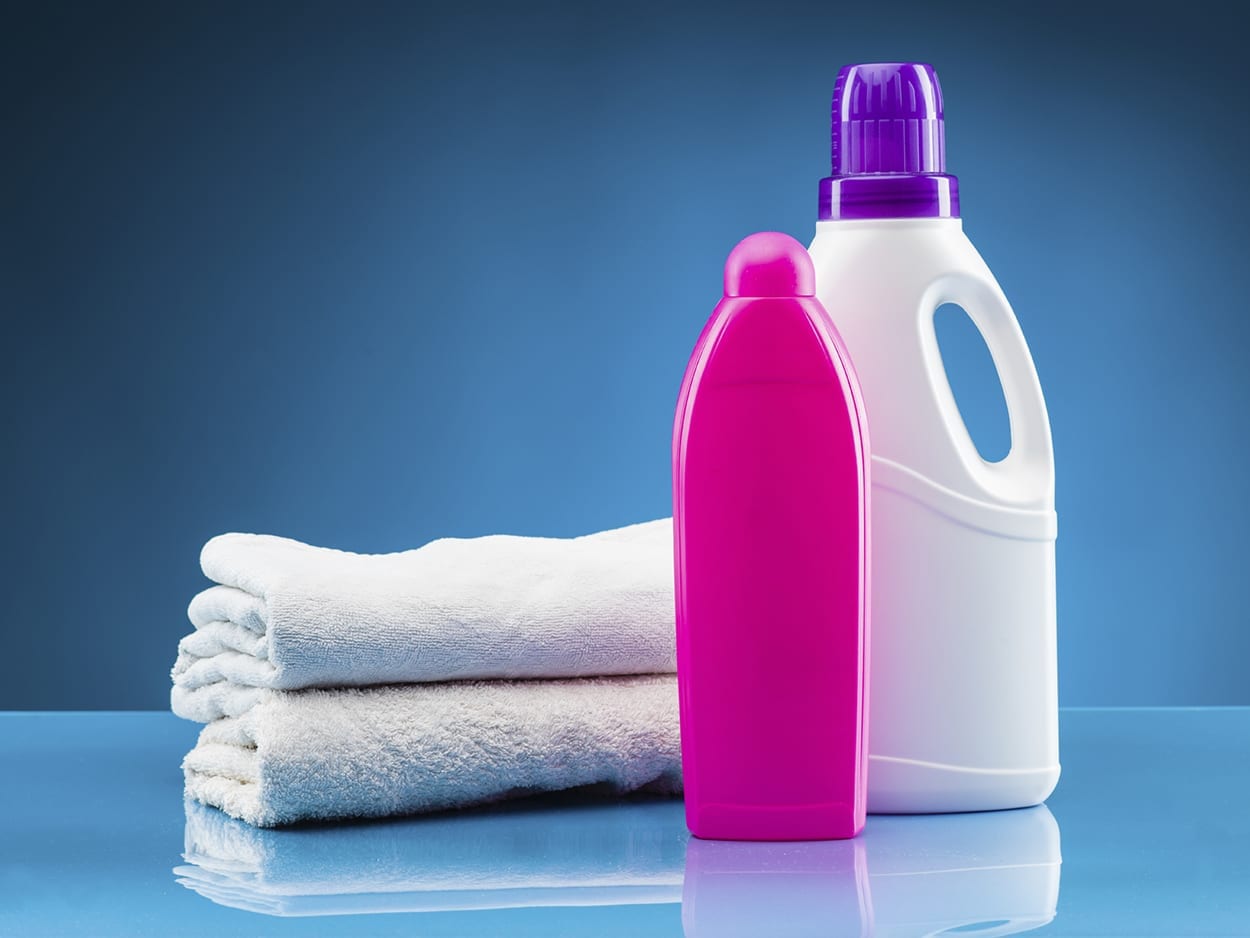Fabric softeners. They keep your clothes feeling soft and static free. And, many enjoy breathing in their fresh scent.
But, what exactly is the difference between the two types of softeners, and is one a better alternative than the other?
How does fabric softener work?
Both fabric softeners and dryer sheets help eliminate static and wrinkles while making clothes feel softer and smell better. However, they work in different ways.
Liquid fabric softener is added to the wash cycle and permeates into fabric fibers. In addition to other benefits, liquid fabric softeners may also keep clothes from stretching, fading and accumulating fuzz.
However, liquid fabric softeners may stain clothes because they are made from oil. They also can build up in a washing machine’s dispenser, requiring frequent cleaning. If you are not using a dispenser or a softener ball, make sure to add liquid softener during the final rinse when the tub is full of water to avoid staining.
Dryer sheets reduce static and increase the cottony feel of fabrics. Dryer sheets are coated with stearic acid, which melts in the dryer and coats clothes to provide these benefits. In some cases, staining also has been reported, so do not overfill your dryer, and place the dryer sheet on top of the clothes after loading the dryer.
When not to use softeners
Because softeners essentially coat fabrics, there are a few laundry items that should not be exposed to softeners:
- Microfiber clothes: Using softeners may damage the fabric’s ability to trap dust and absorb spills.
- Athletic sportswear: Softeners’ coating may lessen this fabric’s “wicking” ability, lessening the chance you’ll feel cooler during your workout.
- Children’s clothing: Manufacturers are required to make children’s sleepwear flame resistant. Softeners will lessen this resistance, so softeners should never be used on children’s sleepwear.
- Towels: Although the feeling of a soft, fresh-smelling towel is welcome, softeners can reduce a towel’s ability to absorb water.
Fabric softener alternatives
Because of these and other concerns with fabric softeners, some people have tried alternatives with some success.
White vinegar does not always reduce static, but it has been found to soften clothes (and as a bonus, it does not leave a vinegar smell). Like liquid fabric softener, add one-half cup (for a large load) of white vinegar to the rinse cycle when the tub is full of water to avoid bleaching and a vinegar smell.
Aluminum foil dryer balls help reduce static but do not get clothes as soft as dryer sheets. Make three-inch balls out of aluminum foil and toss them in the dryer. As the foil becomes smooth, add more foil or replace the balls with new ones.


